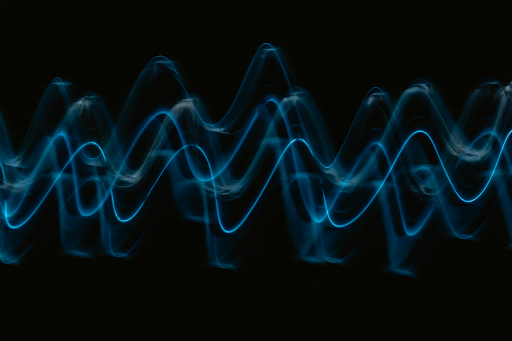While we usually talk about ways to stimulate the vagus nerve, there are also therapeutic and sometimes diagnostic reasons to block the vagus nerve instead. Today, we'll fill you in on many important topics relating to vagus nerve blocks, including why a vagal blockade may be performed, how it works, and the effects of it, and more.
What is the Vagus Nerve?
To begin, however, it's helpful to describe the vagus nerve and the functions it serves. The vagus nerve is also called cranial nerve X. It's the longest of our 12 cranial nerves and one of the most powerful in the body. It emerges from the brainstem and extends downward through the neck, chest, and abdomen, where it connects with many other organs, including the heart, lungs, digestive tract, and urinary bladder.
The main function of this nerve is to regulate unconscious processes like breathing, digestion, and heart rate. In addition to these autonomic functions, the vagus nerve also plays a critical role in modulating inflammation throughout the body by sending anti-inflammatory signals via its sensory fibers.
It's also helpful to discuss its role in the parasympathetic nervous system and the "rest-and-digest" response the vagus nerve can trigger. The vagus nerve is the parasympathetic nervous system's chief regulator, which helps balance and counteract the sympathetic "fight-or-flight" response.
For example, when we are facing a threat or a stressful situation, our sympathetic nervous system kicks into higher gear to prepare us for danger. But, on the other hand, when we're in a safe and relaxed environment, our parasympathetic nervous system is dominant and helps keep us in a state of restful balance. This is where stimulation of the vagus nerve comes into play – it plays a vital role in calming down an overactive sympathetic response and keeping us relaxed.
Unfortunately, many people remain stuck in a fight-or-flight mode, and their vagus nerve isn't kicking in how it should. Unfortunately, this is just one of many vagus nerve problems that can occur.
Vagus Nerve Problems
Next, we'll tell you about five problems that a dysfunctional vagus nerve could potentially cause:
- Nerve damage
- Heart rate issues
- Gastroparesis
- Vasovagal syncope
- Obesity
Nerve damage
If the vagus nerve is damaged, many problems can follow suit. Depending on the area of damage, symptoms can range from mild to severe. Possible signs of nerve damage include hoarseness of voice, difficulty swallowing or speaking, tingling sensations in the hands and feet, difficulty breathing, or even a rapid heartbeat.
Heart rate issues
The vagus nerve is responsible for controlling heart rate by sending signals to the sinoatrial node (SAN). When this system isn't working properly due to an issue with the vagus nerve, it can lead to an abnormal heart rate. This could manifest as either bradycardia (too slow) or tachycardia (too fast).
Gastroparesis
Another problem associated with a malfunctioning vagus nerve is gastroparesis. This condition occurs when the muscles of the stomach do not contract properly. As a result, food moves more slowly or stops moving altogether through the digestive tract, causing nausea, vomiting, and bloating.
Vasovagal syncope
This type of fainting spell is caused by sudden changes in blood pressure and heart rate, triggered by intense fear or pain. This phenomenon is believed to be caused by overstimulation of the vagus nerve, resulting in a decrease in heart rate and blood pressure to levels where consciousness is lost temporarily.
Here's how the Mayo Clinic explains it:
"Vasovagal syncope (vay-zoh-VAY-gul SING-kuh-pee) occurs when you faint because your body overreacts to certain triggers, such as the sight of blood or extreme emotional distress. It may also be called neurocardiogenic syncope.
The vasovagal syncope trigger causes your heart rate and blood pressure to drop suddenly. That leads to reduced blood flow to your brain, causing you to briefly lose consciousness."
Obesity
Lastly, research suggests that there may be an association between vagal nerve dysfunction and obesity. In particular, researchers have found evidence suggesting that obese people may have lower resting vagal nerve activity than non-obese people.
This 2016 study explains one possible connection:
"Chronic ingestion of calorie‐rich diets reduces sensitivity of vagal afferent neurons to peripheral signals and their constitutive expression of orexigenic receptors and neuropeptides. This disruption of vagal afferent signalling is sufficient to drive hyperphagia and obesity."
What is a Vagus Nerve Block?
Considering the list of problems that an underactive vagus nerve can cause, it's no wonder why some people with certain conditions are turning to vagal nerve block therapy.
The use and technique can vary depending on the condition a vagal nerve block is meant to treat. With that in mind, let's talk about two primary uses for this treatment: treating obesity and as a therapeutic relief option for those with painful conditions, including cancer.
Vagal nerve blockade for obesity
When it comes to treating obesity, a vagal nerve block is intended to reduce hunger and promote satiety. Blocking the part of the autonomic nervous system that sends hunger signals to the brain can help people reduce their calorie intake and achieve weight loss.
Also known as vagal nerve blockade (vBloc) therapy, the vBloc device is placed laparoscopically into the abdomen. It works a lot like a pacemaker and sends intermittent electrical pulses to the vagus nerves at the gastroesophageal junction.
As Dr. Caroline Apovian explains in this report:
"Vagal nerve blocking—which has a success rate somewhere in between bariatric surgery and medication—isn't likely to replace all other weight loss treatment options." However, "vagal nerve blocking is a good option for patients who are morbidly obesity and are seeking a permanent solution that is more effective than lifestyle modification alone, but has a minimum risk of complications than anatomy-altering bariatric surgery, with a rate of more than 20%."
Who is eligible?
This new therapy isn't available to just anyone. The same report explains: "The vBloc therapy is currently indicated for adults with a BMI 35 to 45 and targeted to those with at least one obesity-related complication, such as diabetes, elevated lipids, or hypertension, who have already tried, unsuccessfully, to lose weight in a supervised weight management program."
Vagus nerve block for pain
Now let's discuss another use for vagal blockades: treating chronic pain.
Some medical professionals believe that nerve blocks can help reduce the amount of pain people experience, especially those living with conditions like cancer. By interrupting the transmission of pain signals coming from different parts of the body, they can provide relief to those who need it most.
This 2007 pain management book describes some of the uses for this treatment:
"Vagus nerve block with local anesthetic can be used to palliate acute pain emergencies, including vagal neuralgia and cancer pain, while waiting for pharmacologic, surgical, or antiblastic methods to take effect.3 Vagus nerve block is used as a diagnostic and therapeutic maneuver when vagal neuralgia is suspected. Destruction of the vagus nerve is indicated for palliation of cancer pain, including that associated with invasive tumors of the larynx, hypopharynx, and pyriform sinus, and, occasionally, intrathoracic malignancies.3
Owing to the desperate situation of many patients suffering from aggressive head and neck malignancies, blockade of the vagus nerve using a 25-gauge needle may be carried out in the presence of coagulopathy or anticoagulation, albeit with increased risks of ecchymosis and hematoma formation."
Vagus Nerve Stimulation: Uses and Benefits
While this article was focusing on vagus nerve blocking, it's also worth exploring the opposite before we go: vagus nerve stimulation.
Vagus nerve stimulation (VNS) is similar in that it also involves the vagus nerve, but instead of blocking the transmission of this nerve's signals, it stimulates them.
The primary uses for VNS are treating epilepsy and depression. It's thought to help reduce seizures in people with refractory epilepsy — seizures which are not responding to medications—and reduce symptoms of depression.
Plenty of evidence suggests that VNS may also benefit other conditions, including Alzheimer's disease, sleep apnea, tinnitus, and migraines.
However, more and more people are beginning to realize the wellness benefits of non-invasive VNS, including by using the Xen by Neuvana vagus nerve stimulation device. Users wear the special vagus nerve-stimulating headphones it comes with, along with the handheld device, and the dedicated app to control their VNS sessions. They are in charge of things like duration, intensity, and the sounds or songs they listen to during treatment...all from the comfort of home while they go about their day or kick back and relax.
Final Thoughts
We've seen how vagal blockade and stimulation can be used for different medical applications, from weight loss to pain relief and neurological treatment. While research is always ongoing for the long-term effects of VNS and other treatments involving the vagus nerve, this important nerve has significant potential to offer relief from a variety of illnesses and symptoms.
Whether you're looking into using a device like Xen by Neuvana to help manage your chronic pain or depression or considering non-invasive bariatric surgery to promote weight loss without the risks of traditional surgeries, understanding how these therapies work can help you make an educated choice about which treatment option is right for you.





